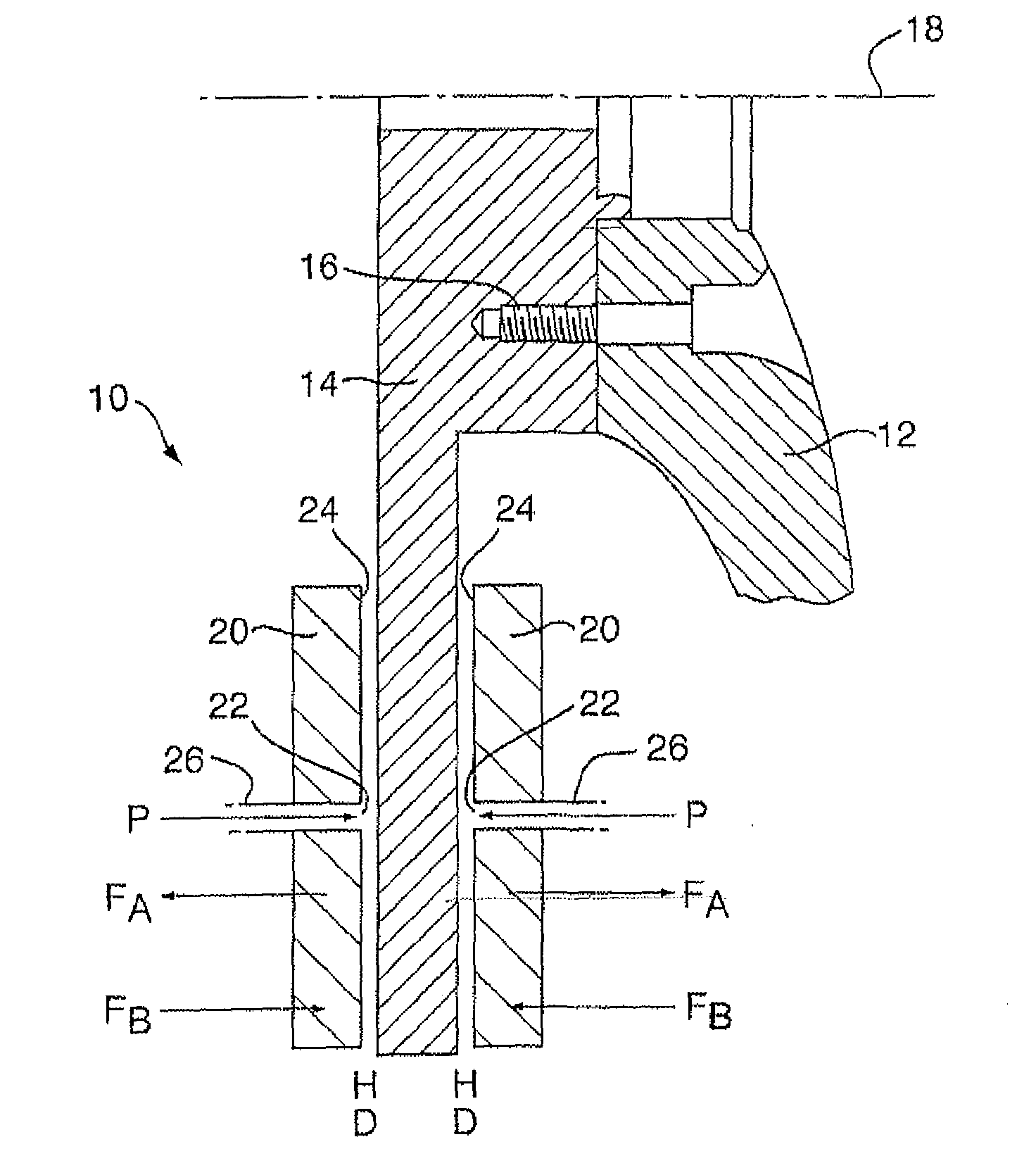Brake pad assembly
a technology of brake pads and assembly parts, which is applied in the direction of brake cooling, brake systems, friction linings, etc., can solve the problems of slowing down the vehicle, speed of rotation of the rotor, and speed of the wheel rotation,
- Summary
- Abstract
- Description
- Claims
- Application Information
AI Technical Summary
Benefits of technology
Problems solved by technology
Method used
Image
Examples
Embodiment Construction
[0163]FIG. 1 is a cross sectional view of one embodiment of a brake system 10 for a motor vehicle. The brake system comprises a wheel hub 12 (shown in part) and a brake rotor 14 (brake disc) rotationally fixed to the wheel hub 12 by a fixing 16 such as a bolt. The wheel hub 12 and brake rotor 14 rotate about a centerline 18 when the vehicle is moving.
[0164]The brake system 10 further comprises a pair of brake pads 20 adjacent to the brake rotor 14. The brake pads 20 each comprise a friction material on a support structure (not shown). The brake pads 20 each have a braking surface 24 of the friction material that faces the brake rotor 14.
[0165]The brake pads are joined to one another by brake calipers (not shown), and the brake calipers are fixed to a static (non-rotating) part of the vehicle. The braking surfaces 24 (and therefore the friction material) of the brake pads 20 can be forced into firm contact with the brake rotor 14 using the brake calipers. The brake calipers are contr...
PUM
 Login to View More
Login to View More Abstract
Description
Claims
Application Information
 Login to View More
Login to View More - R&D
- Intellectual Property
- Life Sciences
- Materials
- Tech Scout
- Unparalleled Data Quality
- Higher Quality Content
- 60% Fewer Hallucinations
Browse by: Latest US Patents, China's latest patents, Technical Efficacy Thesaurus, Application Domain, Technology Topic, Popular Technical Reports.
© 2025 PatSnap. All rights reserved.Legal|Privacy policy|Modern Slavery Act Transparency Statement|Sitemap|About US| Contact US: help@patsnap.com



